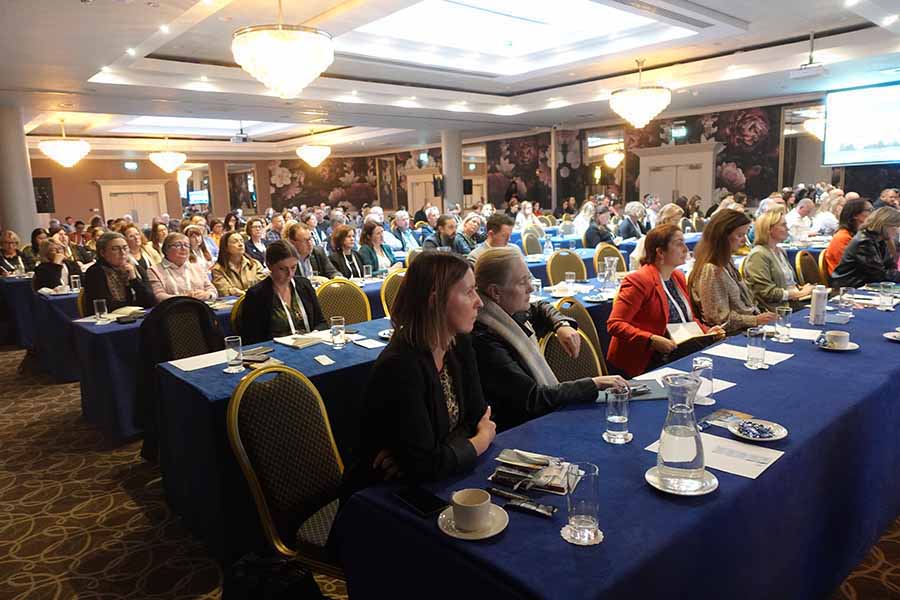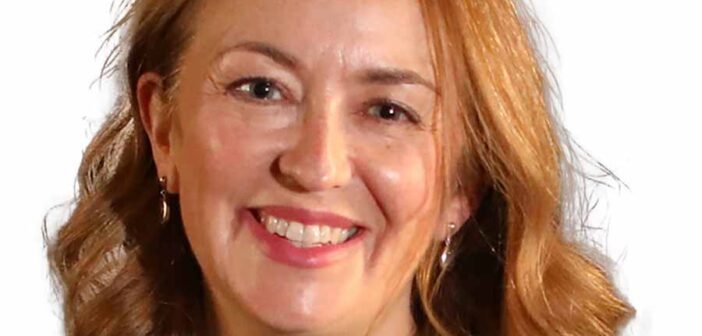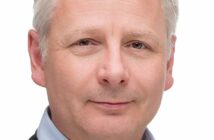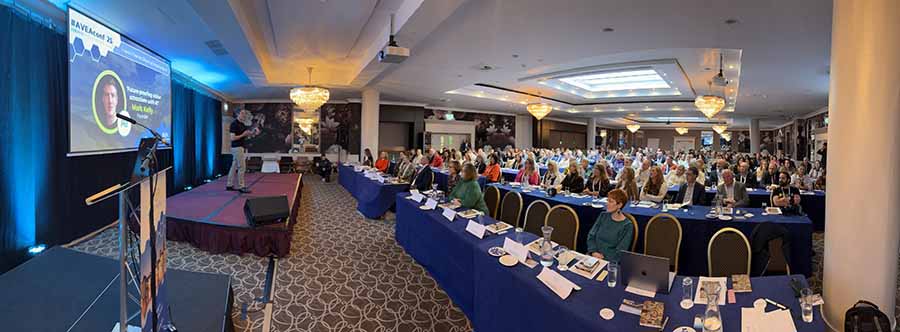
Discussions included artificial intelligence, data, and community engagement and learning from crises, with Donna Speed’s story of fire and protest resilience inspiring attendees. In a uniquw twsit, delegates were asked to write anonymously on postcards sharing holiday memories in an effort by the organisers to reflect the value of emotional connections in tourism.
Future plans for AVEA include an education programme and expanded access for underprivileged children to attractions.
The event featured trails visiting five museums in two hours, highlighting Waterford’s compact historical sites.
Catherine Flanagan shared: “We are all in the business of influencing opinions and decision-makers. I truly believe there is an opportunity for that data to be relevant at scale for huge numbers of people. Let’s do the very best that we can.”
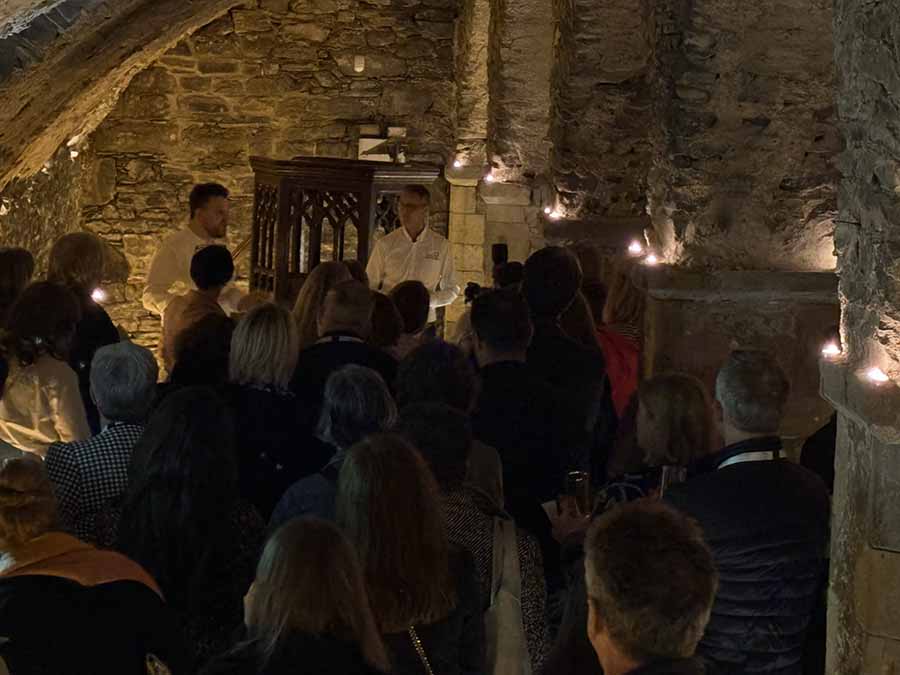
Wine capital of Ireland
The opening evening event at the AVEA Conference took place in the wine cellars of the medieval section of Waterford Treasures Museum.
The event took place in the wine cellar of a building built by Peter Rice in the 1400s, featuring Dundry Stone from Bristol.
Curator Cliona Purcell leads the team in presenting unique exhibitions, focusing on Waterford’s mediaeval past and coin-making history.
Waterford Treasures Museum houses a collection of artefacts spanning over 1,000 years of history, including the 13th-century choristers’ hall. The museum offers special evening events, allowing visitors to explore galleries after dark, enhancing the cultural experience.
Archaeological evidence, such as animal bones and oyster shells, provides insights into mediaeval diets and trade, including wine imports.
Cliona Purcell shared: “The space itself is very, very special. Peter Rice liked the finer things in life, which you can tell as you look around here, see the stone on the edges of the columns. Waterford imported vast punches of wine during the mediaeval period, and sold it right around the southeast of Ireland.”
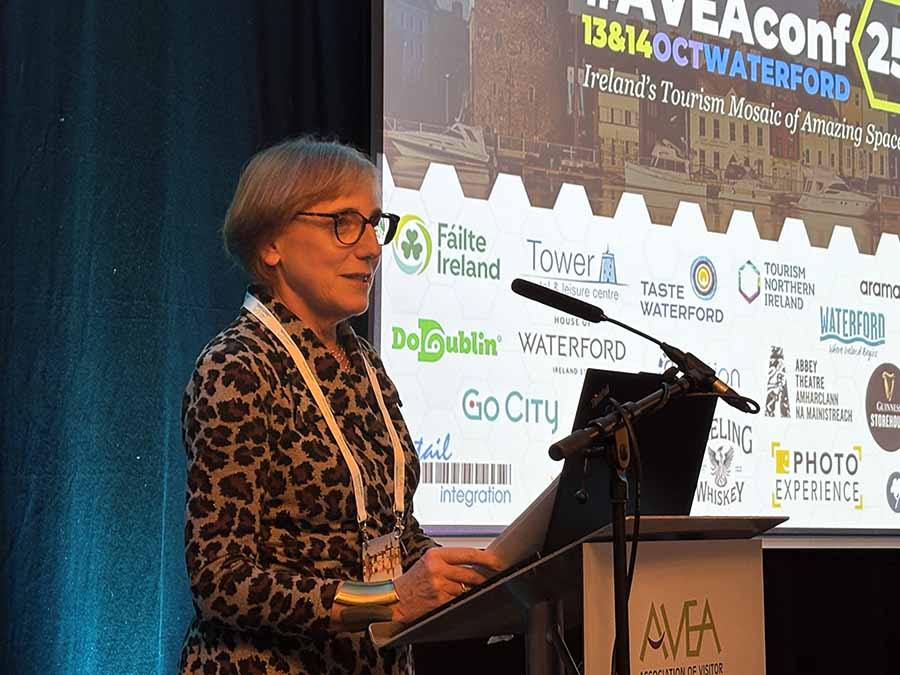
Opening address by Anne O’Donoghue
Chair of the Association of Visitor Experiences and Attractions (AVEA) Anne O’Donoghue said the association has welcomed 15 new members in 2024 and five more since July 2025. Rising operating costs and shorter visitor stays are impacting profitability, particularly for attractions outside major tourism hubs.
Collaboration with Tourism Ireland and Fáilte Ireland ensures attractions are promoted in both international and domestic markets. Legislation addressing airport capacity and investments in regional airports supports access for regional tourism businesses. Overseas tourism to Ireland generated €6.9bn in 2024, with projections to reach €9bn by 2030.
Anne O’Donoghue shared: “Without your continuing support, there could be no AVEA, no unified voice for this Viking tourism sector. Visitors continue to cite landscape, culture, and heritage, which is the very essence of AVEA as their primary motivations for choosing a destination.”
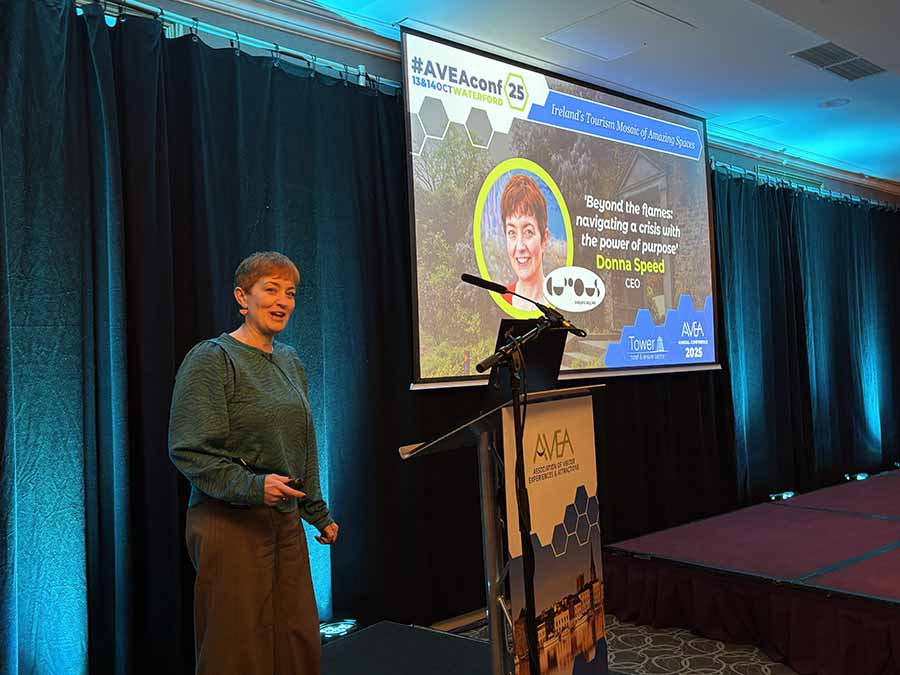
Learning from crises: a tale from Bristol
Donna Speed shared the recent history of We The Curious, a Bristol-based science centre,
The museum faced a major fire in 2022, leading to a two-year, multi-million-pound restoration project, reopening in 2024. Community engagement drives exhibitions like Project What If, built on seven key questions from 20,000 public submissions.
Staff solidarity saved 19 jobs during COVID by voluntarily reducing hours, demonstrating a strong organisational culture. The centre rebranded from At-Bristol after community consultation with nearly 1,000 responses.
A 2025 protest over a historical donation tested the museum’s purpose-led approach, with staff managing a takeover to ensure safety.
Donna Speed shared: “Imagine a world where everyone is included, curious, and inspired by science to build a better world together. The staff response was incredible. They read the situation, in a way, that kept everyone safe. Leading by purpose and putting people first will always lead you to keep conversations and situations.”
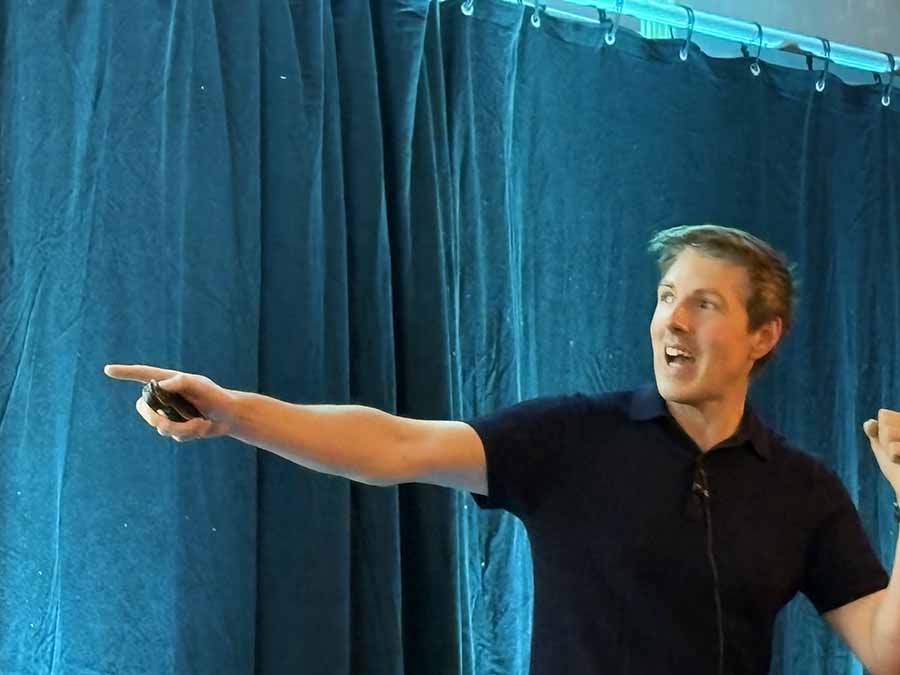
Visitor attractions and AI
Mark Kelly revealed how AI transforms tourism by offering personalised experiences based on customer data and preferences.
AI tools like ChatGPT, with 400m active users by October 2025, enable direct purchases within platforms, reducing reliance on external websites.
Businesses must integrate multimodal AI content, including videos and social media, to remain findable and relevant to customers. He recommended creating different digital personas to gueage reactions form different customer types.
AI agents can automate tasks like price comparisons, saving time and enhancing operational efficiency for tourism businesses.
Training AI with specific business context ensures more human-like interactions, improving customer engagement and satisfaction.
Mark Kelly shared: “You need to be findable all the process in. The context is really really important. You need to train it, but let’s tell you who you are.”
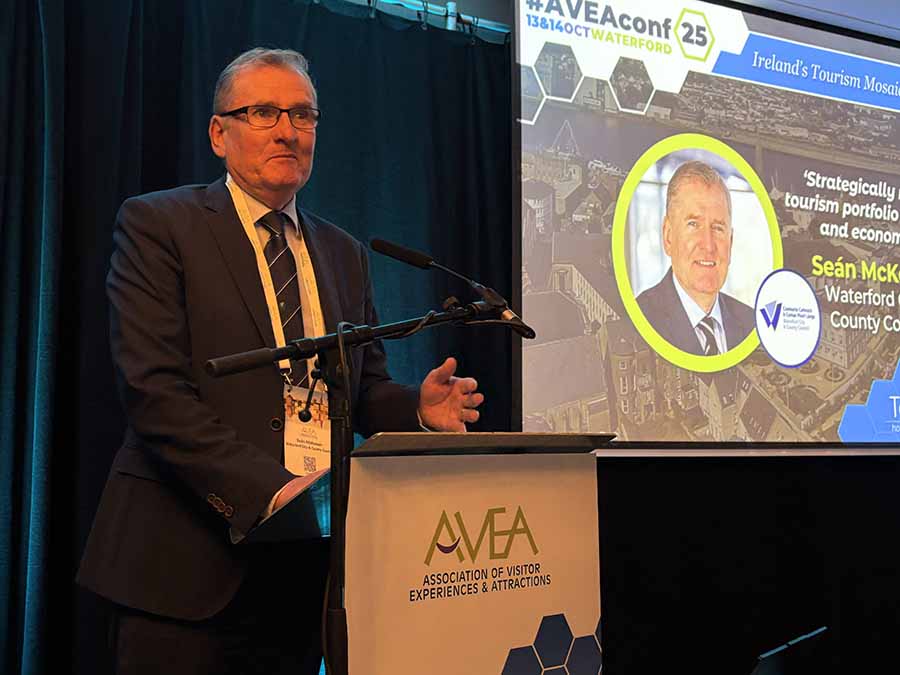
Update on Waterford’s tourism product
Waterford council CEO Sean McKeown has updated delegates to the visitor attraction 2025 conference on the county’s tourism offerings. He said Waterford, Ireland’s oldest city, hosted 163,000 international visitors in 2024, supporting approximately 3,260 jobs in hospitality.
The Viking Triangle, including Waterford Treasures, received €25m in investments to enhance its mediaeval museum and other attractions.
The Waterford Greenway, a 26-kilometre trail opened in 2017, has transformed local villages, boosting bike hire, restaurants, and cafes.
The North Quays regeneration project, valued at €250m, includes a new transport bridge and plans for hotels and residential developments.
Waterford’s tourism strategy focuses on increasing visitor stays, addressing a deficit of 800 bednights through enhanced accessibility and offerings.
Sean McKeown shared: “Tourism is a key sector in our corporate strategies in our city and county development plan. The Greenway was a game changer, opened back in 2017, 26 kilometres from here in Dungarvan. We’re going to continue to invest in the tourism products.”
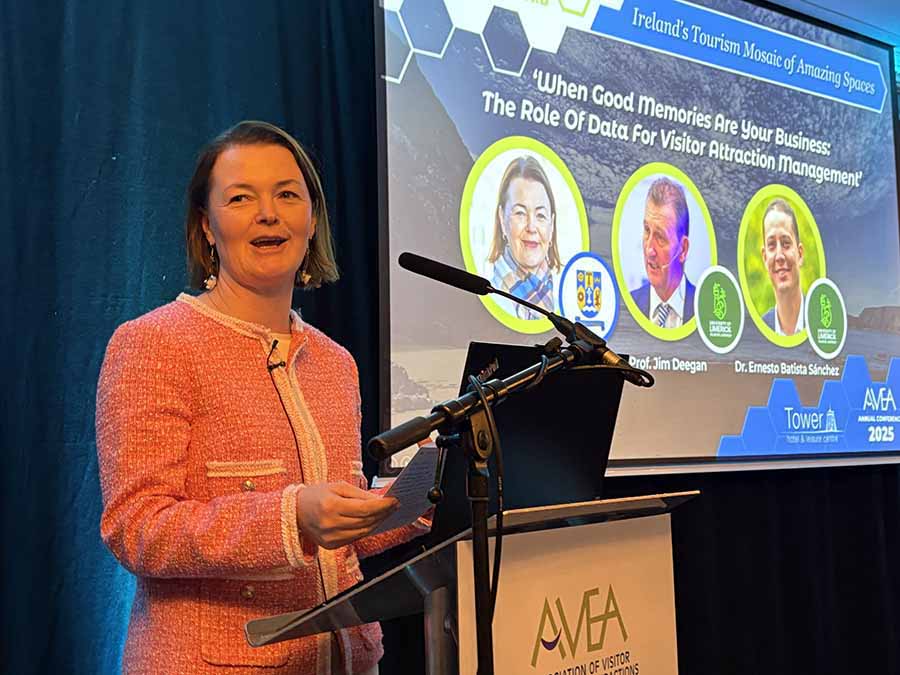
Data-Driven Tourism from Cliffs of Moher
Geraldine Enright, Jim Deegan and Ernesto Santana updated the AVEA conference on the Cliffs of Moher project, a collaboration with the University of Limerick, which uses real-time dashboards to monitor visitor patterns and inform management decisions.
Data from Wi-Fi and surveys revealed 55pc of visitors arrive by car, driving economic recovery in County Clare post-COVID.
The Cliffs of Moher attracted over half a million American visitors in 2025, with 94pc of visitors being international from over 100 countries. It indicated 75pc of visitors stay in Galway or Clare the night before their visit, with 29pc spending at least one night in Clare.
Only 12pc of visitors use coach tours, with 88pc of car visitors staying in Ireland for more than one night, often in nearby counties.
Customer data informed the launch of the Burren and Cliffs of Moher sustainable transport service in 2025, connecting local towns and villages.
Data analysis identified key markets, enabling targeted marketing investments to prioritise high-value visitors from North America and Europe.
Real-time Wi-Fi data dashboards track visitor demographics, such as 55pc of October 2025 visitors from the USA being over 55 years old.
Jim Deegan shared: “Correlation and causation. The cock crows every morning, but it doesn’t bloody well cause the sun to come up.”
Ernesto Santana shared: “This is a perfect example of how important it would have got science in the region. We estimated that just between July and August alone, the Cliffs generated an extra €1m of local expenditure.”
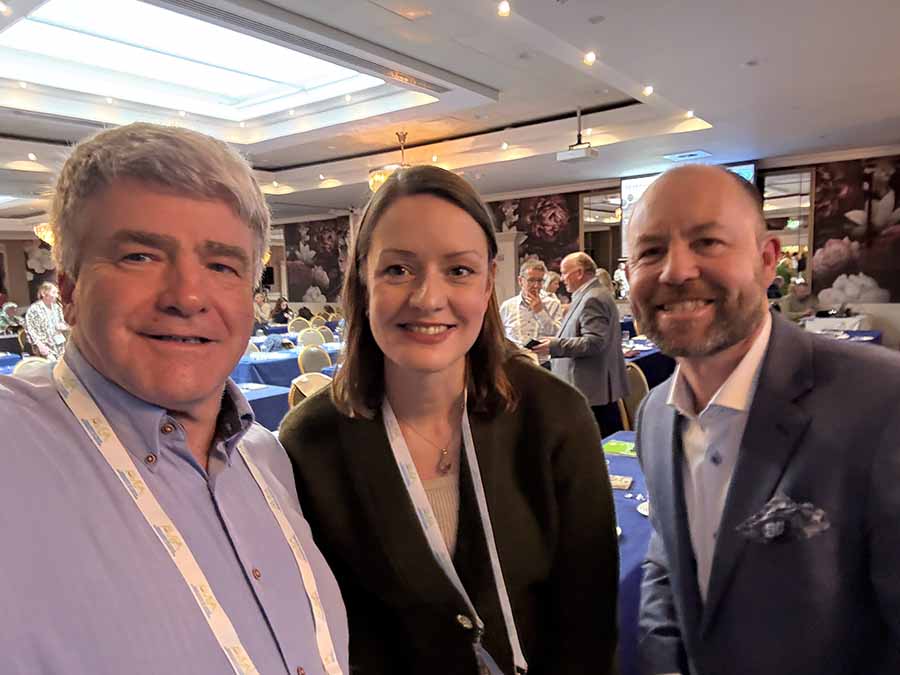
Impact of tourism on Ireland’s economy
Tourism Ireland calculates in overseas visitor revenue reached €6.9bn in 2024, with a projected increase to €9bn by 2030, the AVEA conference was told.
A panel session of Eoghan O’Mara Walsh, Alice Mansergh and Paul Keeley discussed the impact opf tourism on the local economy.
The organisation supports 1,000 commercial partnerships annually, generating €17m in business for SMEs in the first half of 2025.
A new brand campaign for 2026 features visitor attractions like Cong Abbey and Johnstown Castle, targeting 7.5m social media followers.
North America accounts for one-third of visitors, with a 15pc increase in air seat capacity from the USA in Q4 2025.
Destination Experience Development Plans (DEDPs) integrate attractions and local authorities to extend visitor dwell time across Ireland.
Alice Mansergh shared: “We’re setting ourselves a goal of helping at least a thousand SMEs for those overseas platforms.”
Paul Keeley shared: “Attractions and activities give you the reason to visit the location.”
Eoghan O’Mara Walsh shared: “We need to reach out to different audiences that we reached before and show them that this is an aspirational holiday destination for high-income individuals.”
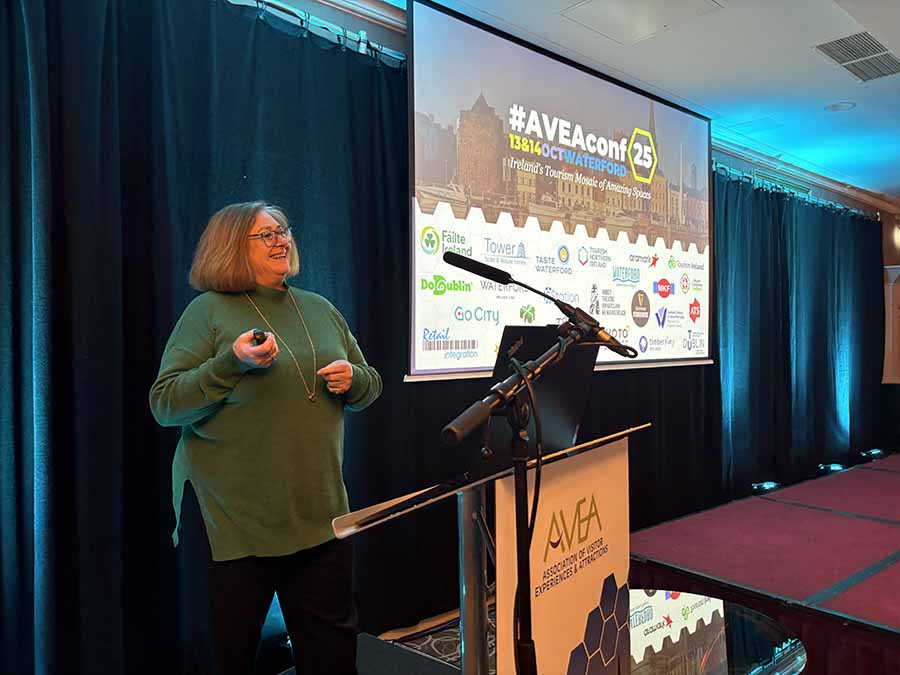
The ‘largest and wealthiest generation’ is on its way
The next generation of travels are anxious to engage in multiple experiences while on a destination or a trip, Jill De Azevedo of Failte Ireland told delegates at the conference.
Generation Z refers to the demographic cohort born between the mid-1990s and the early 2010s, most commonly cited as 1997 to 2012.
By 2035 Gen Z will be the largest and wealthiest generation, their estimated worth will be €85trillion. At the moment they tend to book the safe components of a trip in advance, accommodation and transport, but not the experiences.
Of this generation 64pc spend time online consuming social media, with an average of three hours and five minutes each day. Gaming is not considred to be social media. Get Z travel three times a year. Surprisingly, 55pc district AI and Gen Z is generally slow to adopt and integrate it into their own lives.
They value a sense of safety and security, recognition, development stage and common base from which to engage in the world. IRL (In Real Life) and touching grass are the emerging trends.
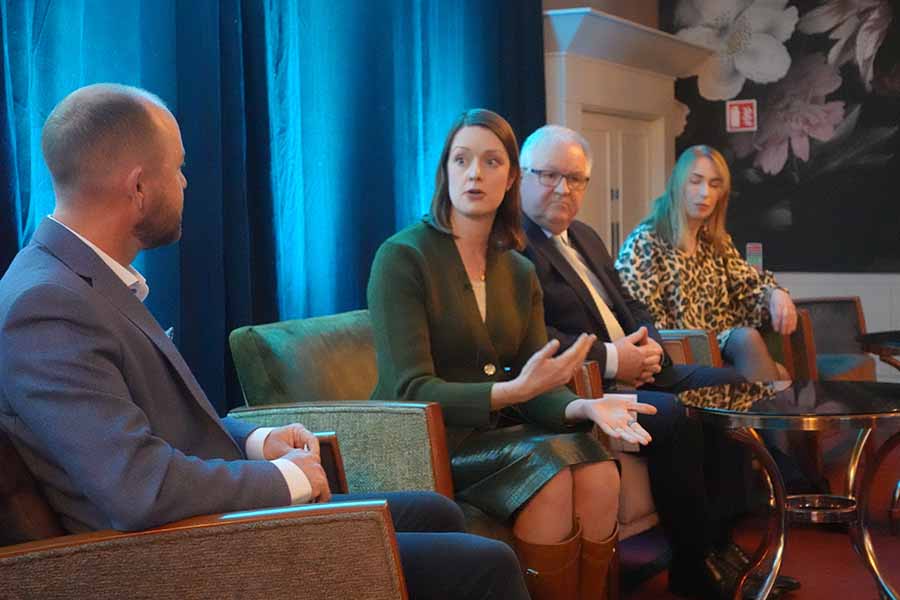
Visitor attractions and TourismNI approach
Eimear Callaghan of Tourism NI revealed year-on-year visitor growth at Titanic Belfast, Giants Causeway, and James Fort in 2025 in a presentation to the AVEA conference.
A £50m (€59m) investment in Ulster University’s tourism infrastructure will introduce new experiences over the next five to ten years. The Derry Walls and DNA project, a new visitor attraction, enhances Derry’s cultural offerings, connecting historical narratives.
Tourism NI’s food and drink trails, developed with a Canadian partner, will promote culinary experiences to boost visitor engagement. Seasonal events, particularly around Halloween and October, are working to extend the tourism season, encouraging longer stays in local communities.
Eimear Callaghan shared: “It’s been a very strong year which we’re absolutely delighted by. Visitor attractions and experiences are a key way when you’re being a visitor. We got in the market and working closely to try and cohere that product and bring it to market in a way that visitors will really understand.”
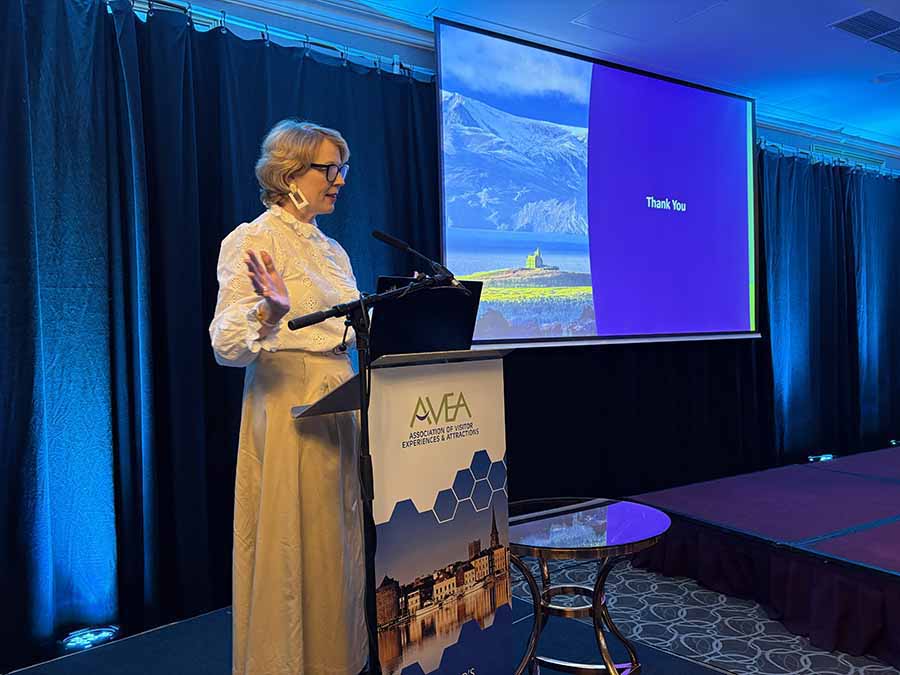
Focus on premium European visitors
Monica MacLaverty urged delegates to focus on premium European visitors who spend more and stay longer. The average European stays five days, and Tourism Ireland is targeting high-income individuals in 2026 with more mainland European campaigns.
Content campaigns launched in September 2025 promote Greenways and hiking to showcase Ireland’s landscapes across all regions. North America remains a key market, with inter-generational tourism driving family visits, while Europe attracts younger couples.
Tourism Ireland collaborates with transport companies to improve public transport routes, enhancing access to attractions. Investments in northern European markets like Norway and Sweden capitalise on growing interest due to warmer southern climates.
Monica MacLaverty shared: “We are definitely on the going after that five-day stay from European markets. There’s definitely a trend in Europe to go towards the northern European destinations. We’ve a lot better than many think we are in public transport.”
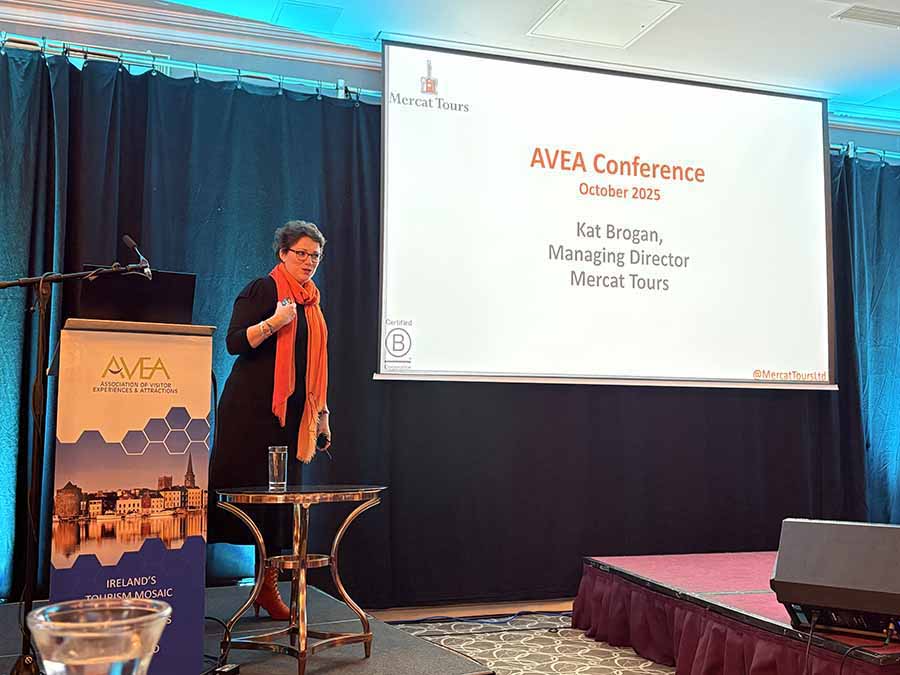
Prioritise team welfare – Kat Brogan
Kat Brogan, a third generation Donegal woman, gave details to the 2025 AVEA conference of the operations and experiences of Mercat Tours, founded in 1985 by her father Steve Brogan, is Scotland’s largest walking tour company, operating from Edinburgh’s Mercat Cross.
The company prioritises team welfare, implementing permanent contracts for all staff since 2015 and achieving real living wage accreditation in 2016.
A local programme with O High School, launched in 2016, engages 120 secondary students annually, fostering interest in tourism and history.
The Our Stories Your City project, started three years ago, provides free tours for disadvantaged Edinburgh communities, funded by visitor donations.
Mercat Tours became Scotland’s first visitor attraction to gain B Corp accreditation in 2024, measuring team satisfaction and gender pay gap to ensure accountability.
Kat Brogan shared: “Team first always means, because if they are nurtured, if they are seen, then they will have a phenomenal experience to your visitors. We don’t just say we’re going to do stuff, we prove that we’re going to do stuff. It’s all about making connections. That’s what we do at Mercat Tours.”
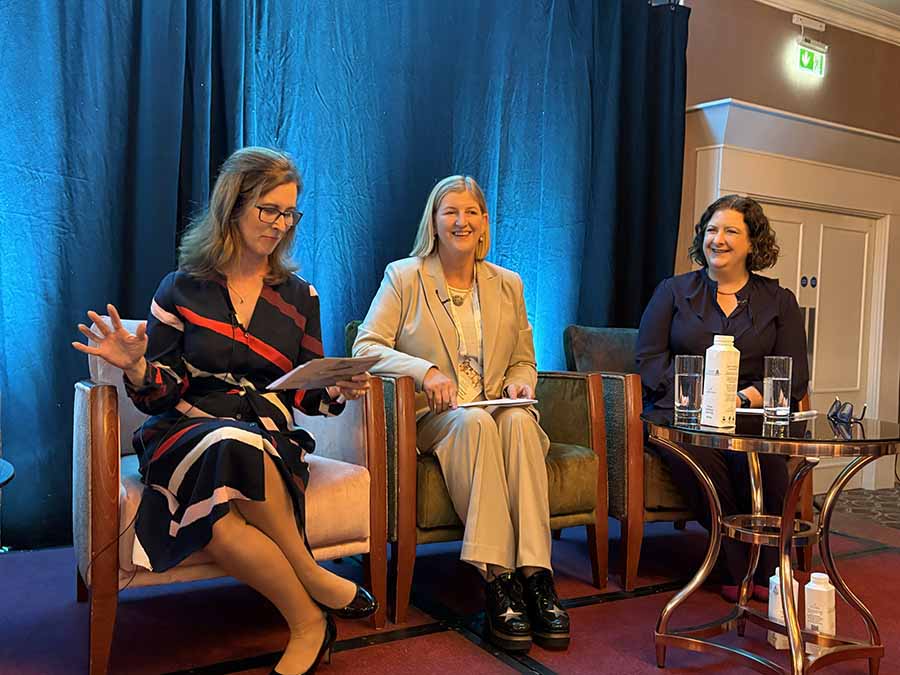
Dublin attractions face challenges
The challenges facing visitor attractions in Dubin were discusses at the AVEA o=conference by a panel that included Catherine Toolan, Brendan Kavanagh and Aileesh Carew.
Catherine Toolan revealed the Guinness Storehouse, celebrating its 25th anniversary in 2025, welcomed nearly 26m visitors since opening.
Brendan Kavanagh highlighted challenges in attracting visitors to Glasnevin Cemetery due to limited public transport connectivity from Dublin’s city centre.
Aileesh Carew noted the transformation of Dublin’s docklands since EPIC Ireland’s opening in 2016, with new attractions like the Pump House and Water Sports Centre.
Dublin’s major attractions, including Trinity College and EPIC, welcome 3.5 to 4m visitors annually, but urban cleanliness and safety remain concerns.
The Dublin Taskforce, supported by Dublin City Council, aims to improve public realm and transport to enhance visitor experiences by 2035.
Catherine Toolan shared: “The data does not infer that Dublin is an unsafe city.”
Brendan Kavanagh shared: “Our focus is to give the most passionate, expressive experience when they’re there.”
Aileesh Carew shared: “I would really love to see the Liffey animated with places for coffee, with little places for kids and families to play.”
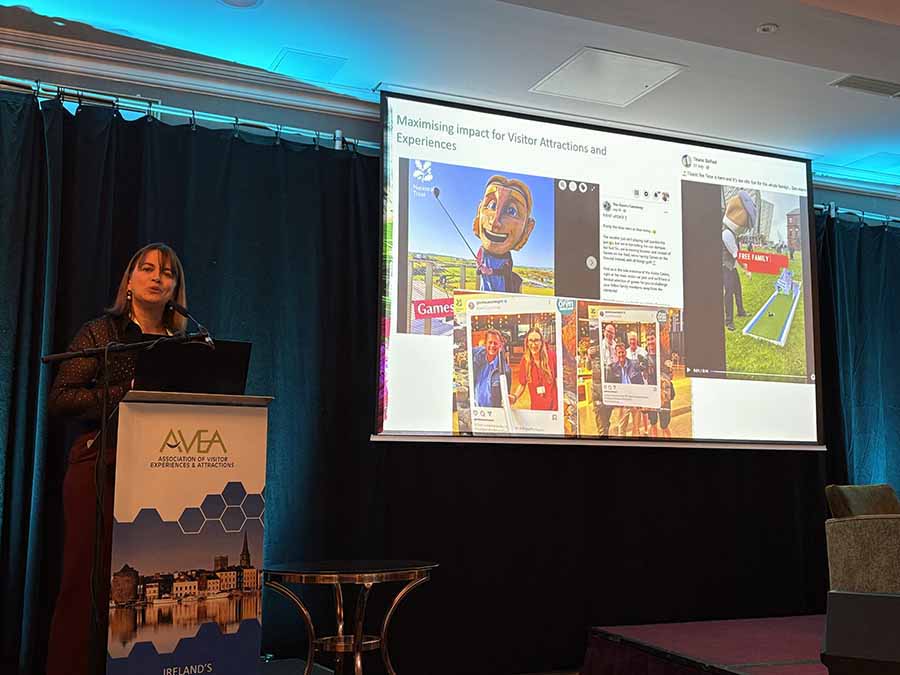
British Open in Portrush generated €245m in revenue
Carmel Scott of Tourism NI told delegates to the 2025 AVEA conference that the 153rd British Open in July 2025 at Royal Portrush generated €245m to the local economy.
The event attracted 278,000 across eight days, including 90,000 during practice days, the most daily only page users in the event’s history, was Sky Sports most watched golf event with 21.2m viers (up 36pc), and a record 19,000 children attended (more than corporate hospitality).
over 20,000 visitors, boosting local business revenue by 31pc compared to July 2024.
Derry’s food village and open-stage music events in 2025 achieved 85pc hotel occupancy, encouraging multi-day visitor stays.
Titanic Belfast’s family-friendly activities and Game of Thrones tours leveraged partnerships to enhance visitor experiences in 2025. An art competition engaged school children across the region, with winning entries featured at the Open, promoting cultural pride.
Collaborative marketing with local councils and transport partners amplified event visibility, driving residual tourism to areas like Mourne Mountains.
Carmel Scott shared: “It was so important that the golf visitors experienced the giant welcome that we in Ireland are famous for. 90pc said the event positively impacted Ireland overall. The residual benefit in the following week, the visitors remaining to explore the wider destination after the championship.”
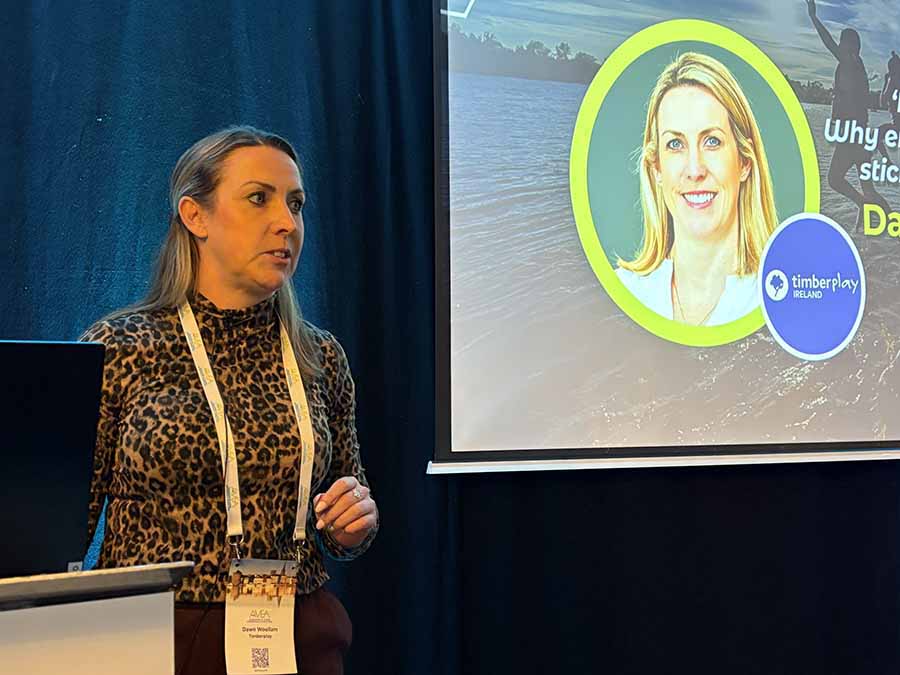
Play based experience can boost appeal of attractions
Dawn Woollam of Timberplay told delegates that investng in play will experience the experience economics of a visitor attraction.
She said gives an average return on investment of two years and an eight times lifetime playback, adding nearly 2 euro an hour to income for the attraction balance sheet. It can also mean a saving of 80 to 90p on marketing, and enhances the experience for both staff and customer.
Without any additional headcount, it can contribute to customer retention of 34c.
Dawn Woollam shared: Benefit risk is a concept which acknowledges that in sports and recreation. There is an inevitable and inherent trade-off between the benefits of a sport or recreational activity and some of the risks that it can pose, but benefit risk assessment shows the form of risk assessment that considers both risks and benefits in parallel when making decisions.
She quoted the chief medical officer of ‘Start active, stay alive,” as saying that physical activity has a very low risk for most children, however, the risk of poor health from inactivity is very high”.
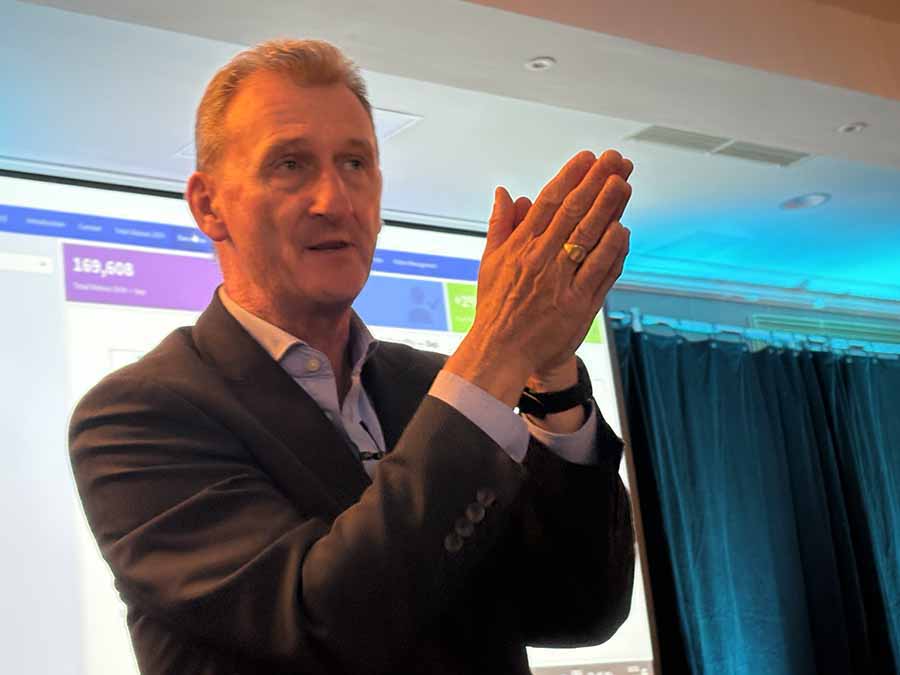
Reduced VAT for visitor attractions would cost €14.7m
Jim Deegan told the conference that reduced VAT for visitor attractions, in line with the reduction from 13pc to 9pc to food services, would cost the exchequer €14.7m in attraction tickets for 2026.
Jim Deegan of Limerick Univeristy called for better data measurement, including the Household Travel Survey, to accurately reflect tourism’s full impact. He said unintended consequences of policies, like higher wages, necessitate productivity gains through experience enhancements. He said the Department of Finance has a historical biases against services, despite evidence of economic benefits.
Domestic tourism accounts for nearly 50pc of the sector with conservative measures, yet higher wages and costs challenge profitability.
Jim Deegan shared: “The experience economy is very high value about the perception and history where these are all low-value jobs. We proved categorically it was well worthwhile, and there was pure addition to the economy. The big big issue does not measure properly in Ireland, is tourism gain business.”
